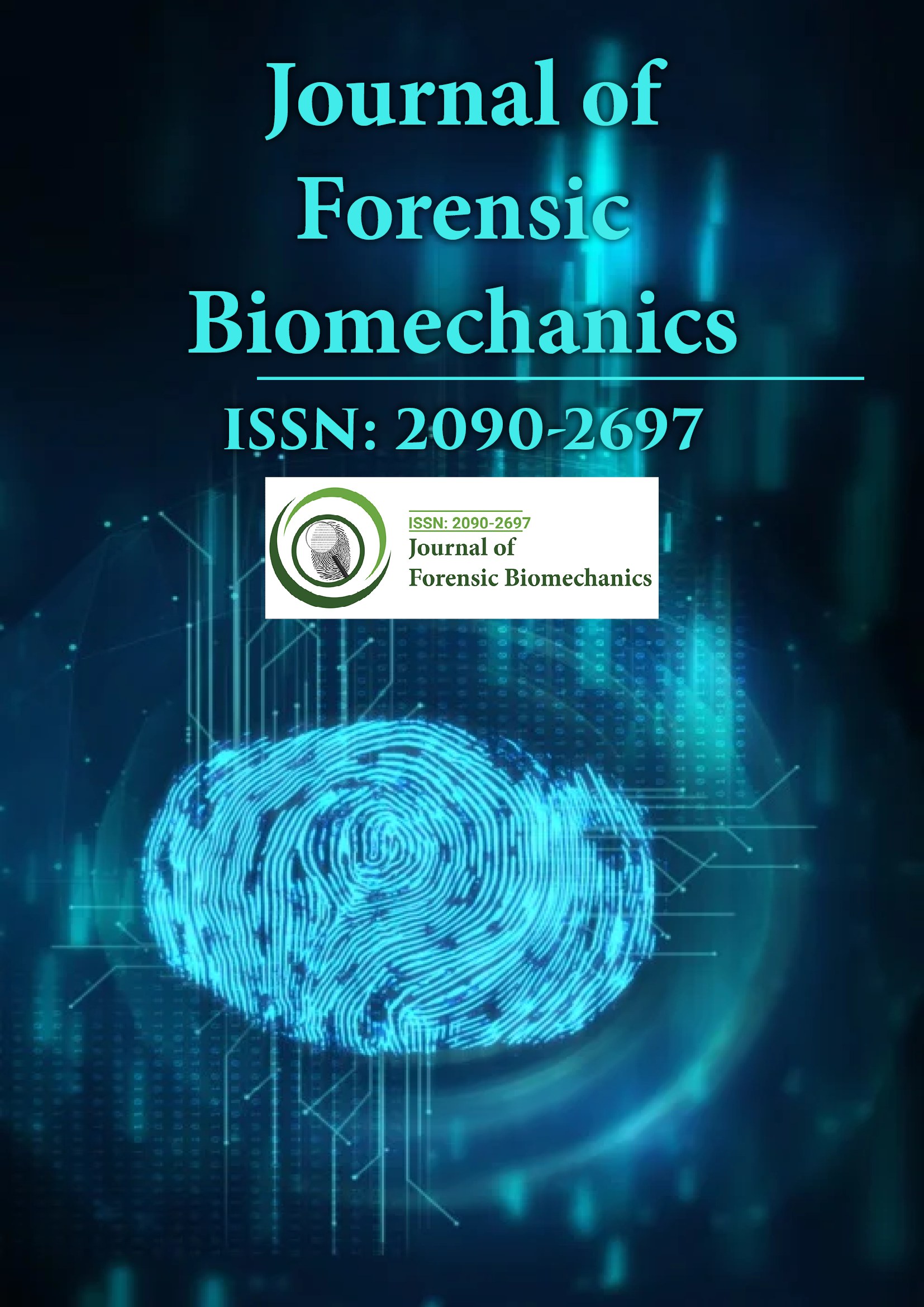Indexed In
- Genamics JournalSeek
- SafetyLit
- Ulrich's Periodicals Directory
- RefSeek
- Hamdard University
- EBSCO A-Z
- Geneva Foundation for Medical Education and Research
- Euro Pub
- Google Scholar
Useful Links
Share This Page
Journal Flyer

Open Access Journals
- Agri and Aquaculture
- Biochemistry
- Bioinformatics & Systems Biology
- Business & Management
- Chemistry
- Clinical Sciences
- Engineering
- Food & Nutrition
- General Science
- Genetics & Molecular Biology
- Immunology & Microbiology
- Medical Sciences
- Neuroscience & Psychology
- Nursing & Health Care
- Pharmaceutical Sciences
Commentary - (2024) Volume 15, Issue 2
Quantitative Biomechanical Assessment in Forensic Pathology: Current Trends and Future Directions
Hatta Taku*Received: 01-Jul-2024, Manuscript No. JFB-24-26589; Editor assigned: 04-Jul-2024, Pre QC No. JFB-24-26589 (PQ); Reviewed: 18-Jul-2024, QC No. JFB-24-26589; Revised: 25-Jul-2024, Manuscript No. JFB-24-26589 (R); Published: 01-Aug-2024, DOI: 10.35248/2090-2697.24.15.489
Description
Quantitative biomechanical assessment is an evolving field in forensic pathology that utilizes mathematical and physical principles to analyze and interpret distressing injuries. This approach bridges the space between biomechanics and forensic science, offering a more objective basis for understanding the nature and causes of injuries observed in post-mortem examinations. As technology advances, quantitative biomechanical methods are becoming increasingly sophisticated, providing deeper insights into injury mechanisms and improving the accuracy of forensic investigations.
Current developments
Integration of computational modeling: One of the most significant trends in quantitative biomechanical assessment is the integration of computational modeling techniques. Finite Element Analysis (FEA) and other simulation tools are increasingly used to model and predict the effects of different types of forces on human tissues and structures. By creating detailed digital models of anatomical structures, forensic pathologists can simulate how specific forces, such as impacts or compressions, affect these structures. This approach helps in understanding complex injury mechanisms that are difficult to analyze through traditional methods alone.
Advances in imaging technologies: The development of advanced imaging technologies, such as high-resolution CT scans and MRI, has greatly enhanced the ability to analyze injuries quantitatively. These imaging modalities provide detailed, three- dimensional views of internal injuries and structural damage, which can be important for accurate biomechanical assessments. Combining imaging data with biomechanical models allows for a more precise evaluation of injury patterns and their potential causes.
Application of machine learning and artificial intelligence: Machine Learning (ML) and Artificial Intelligence (AI) are increasingly being applied to forensic biomechanics to analyze large datasets and identify patterns that may not be immediately apparent through traditional analysis. These technologies can process complex data from various sources, including medical imaging and biomechanical simulations, to assist in injury analysis and classification. AI algorithms can enhance the predictive power of biomechanical models by learning from vast amounts of data and refining injury assessment techniques.
Development of biomechanical databases: The creation of comprehensive biomechanical databases is another emerging trend. These databases compile data from a wide range of studies and cases, providing a valuable resource for comparing and analyzing injury patterns. By aggregating information on injury types, forces involved, and outcomes, forensic pathologists can develop more accurate and generalized models for injury assessment and forensic analysis.
Future directions
Enhanced personalization of biomechanical models: Future advancements are likely to focus on enhancing the personalization of biomechanical models. Individual variability in anatomy and biomechanics can significantly impact injury outcomes. Developing personalized models that account for factors such as age, sex, and body composition will improve the accuracy of injury assessments and provide more tailored forensic analyses.
Integration with other forensic disciplines: The future of quantitative biomechanical assessment in forensic pathology will likely involve greater integration with other forensic disciplines. Combining biomechanics with forensic odontology, toxicology, and pathology can provide a more comprehensive understanding of injury mechanisms and contributing factors. Multidisciplinary approaches will enhance the ability to reconstruct events and determine the cause of death with greater precision.
Advancements in real-time monitoring: The development of real-time monitoring technologies could revolutionize biomechanical assessment. Wearable sensors and other monitoring devices could provide continuous data on forces and impacts experienced by individuals in various scenarios. This real-time data could be invaluable in understanding injury mechanisms and improving biomechanical models for forensic applications.
Citation: Taku H (2024) Quantitative Biomechanical Assessment in Forensic Pathology: Current Developments and Future Directions. J Forensic Biomech. 15:489.
Copyright: © 2024 Taku H. This is an open-access article distributed under the terms of the Creative Commons Attribution License, which permits unrestricted use, distribution, and reproduction in any medium, provided the original author and source are credited.

